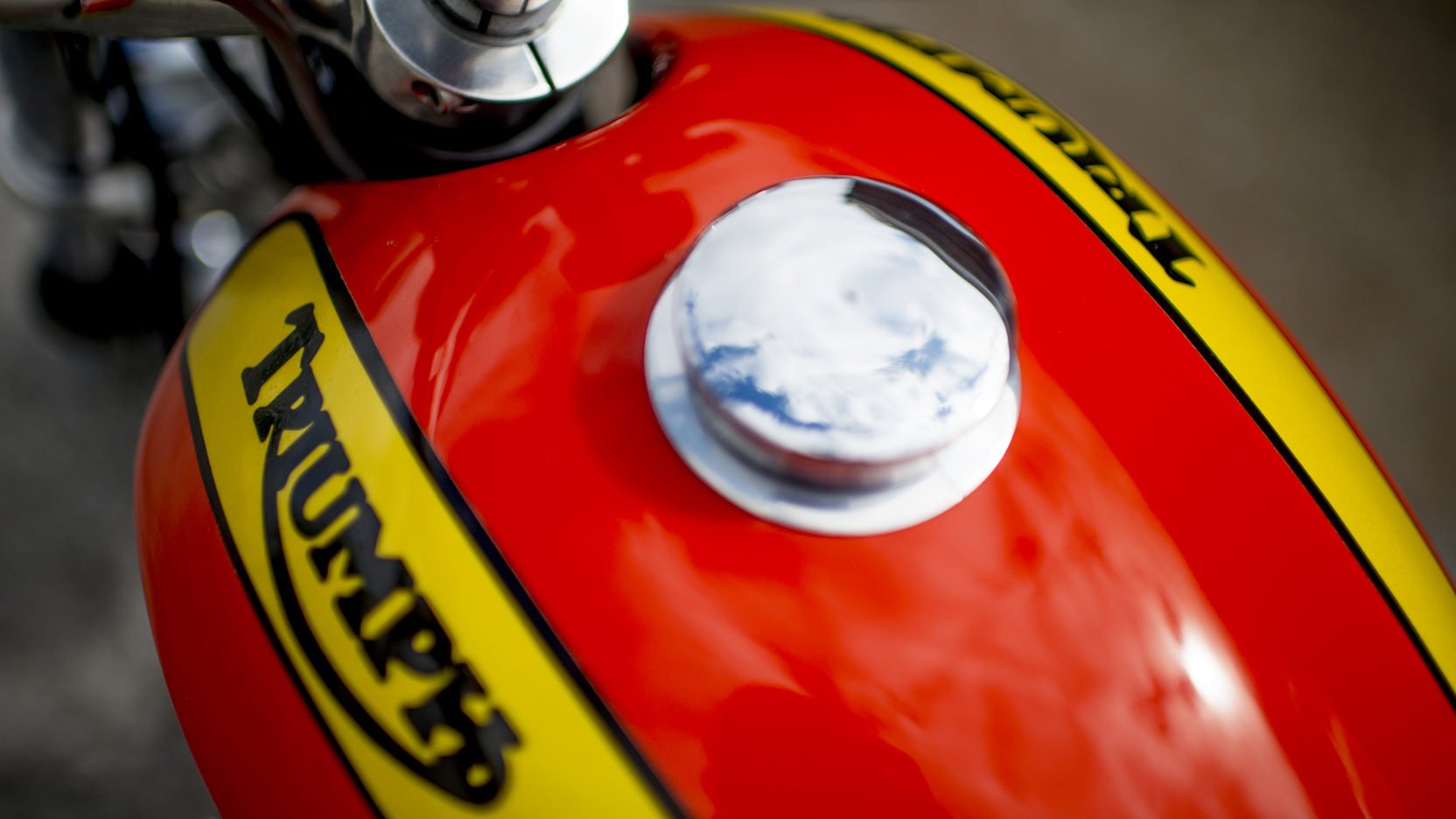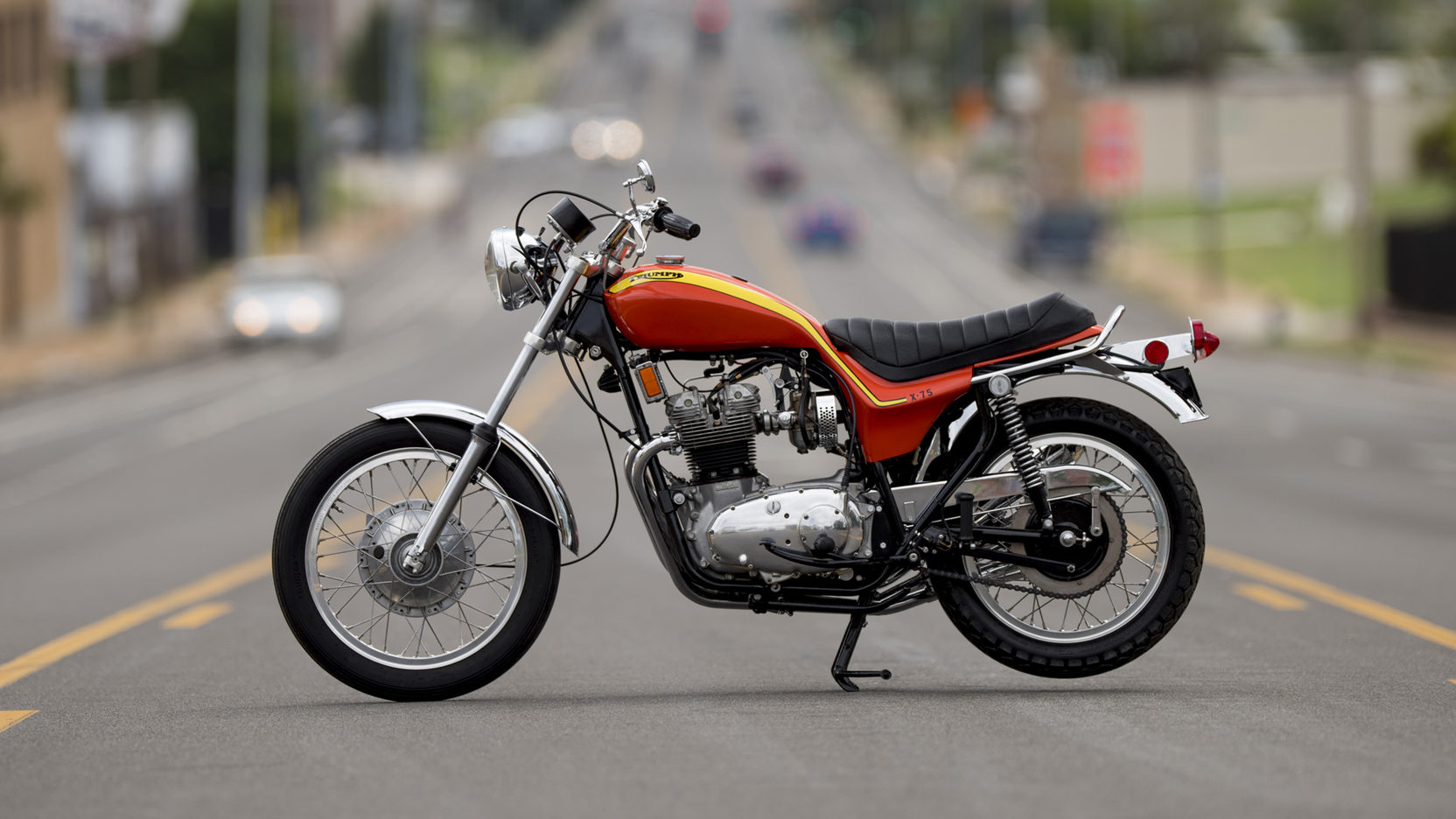


Engineer Steve Mettam was given the job of supervising production for the 1972/3 season and the Vetter BSA Rocket3 became the Triumph X75 Hurricane. They realised they had a large stock of obsolete BSA Rocket-3 parts that could now be turned into a premium-priced motorcycle. At BSA-Triumph's design facility at Umberslade Hall, the design was seen as too "trendy" by chief designer Bert Hopwood but after very positive public reaction to the design when it appeared on the front of US magazine Cycle World in October 1970, the UK managers changed their minds. Thornton and the American officials were impressed, and Vetter's bike was then sent to the UK, but the bike arrived in England just as the BSA marque was about to be ended. Vetter created the Triumph Hurricane in the summer of 1969, and in October 1969 he unveiled the prototype with "BSA" on the tank as the new ‘Rocket Three’. (Brown revealed the Vetter project to Peter Thornton, President of BSA/Triumph North America, but as Brown's initiative had not been authorised by BSA, Vetter had problems being paid, waiting two years for his fee). Brown felt that the BSA/Triumph triples needed a different look to succeed in the USA, and he engaged designer Craig Vetter to give the BSA A75 a customised face-lift, with a brief to make it "sleeker and more balanced". However, they acknowledged that the bike was fast, and a sales team led by BSA Vice-President Don Brown decided to launch the bike by using a Rocket-3 to set some records at Daytona, records which were broken in 1971 by the Kawasaki Z1. They knew Honda had an important bike (the CB750) coming along, and they felt the triple's price of $1800 was too high and that technical details (like vertically-split crankcases and pushrod ohv valve train) were far from "cutting edge". When, in 1968, the new BSA Rocket 3/Triumph Trident triples were shown to the American BSA-Triumph management, they were underwhelmed. Vetter was commissioned by BSA's US distributor to customise the BSA Rocket 3 to appeal more to American tastes. Not quite as brutal as a thumping twin or single, not as smooth or refined as a four, triples make a very raw, iron-fist-in-a-velvet-glove kind of roar. When BSA went under, 1,200 engines were put aside and the bike was rebranded as a Triumph.Three cylinder motorcycles in general are pretty neat sounding machines. Famous designer Craig Vetter was tasked with a stylistic redo, and the resulting bike was different, to say the least, with a very 60’s chopper style and a distinctive triple exhaust slung along the right side of the bike. Originally a BSA design, with very sleepy, Triumph Bonneville-esque style, the honchos felt it was way too conservative for American tastes.
The Triumph Hurricane X75 was a bit of a mongrel from the word go. If you’ve got a Triumph-sized hole in your collection and want something pretty wild and very cool, this might fit the bill. We are thrilled to offer such a unique and rare piece of motorcycle history.


 0 kommentar(er)
0 kommentar(er)
